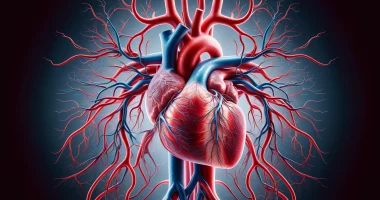Breast cancer
What does breast cancer mean?
Breast cancer (BC) is a malignant neoplasm originating from the epithelial cells of the breast.
About the disease
The peak incidence of breast cancer is between the ages of 60-61. It is one of the most common cancers in the female population. However, breast malignancy can also occur in men (up to 1% of cases).
Early diagnosis is primarily based on visualization of the tumor using ultrasound or X-ray scanning. The doctor selects an individual examination program by international oncological guidelines if malignancy is suspected.
Radical treatment is performed by surgical removal of the tumor and lymph nodes and in combination with chemotherapy.
Forms and types of breast cancer
The following types of breast cancer are distinguished:
- ductal, which develops from the epithelium lining the ducts of the lobules and lobes;
- lobular – malignant tumor is formed from lactocytes (epithelial cells lining the acinus);
- Paget’s cancer is a malignant tumor from the milky ducts that affects the nipple-areolar region.
Before treatment, the prevalence of the cancer process is assessed by clinical examination. Three categories are defined to determine the stage of the disease:
- T – characteristics of the primary tumor (size, extent of penetration into the underlying tissues);
- N – involvement of nearby lymph nodes (axillary, supra- and subclavian, cervical);
- M – detection of malignant lesions defined at a distance from the primary focus (may involve lymphoid structures or internal organs).
Pathomorphologic staging is performed after surgery. A morphologist evaluates the condition of the removed biomaterial.
- pT – status of the primary tumor. This surgical intervention is adequate if no malignant cells are found in the resection margins. If microscopic invasion is detected, its magnitude is assessed.
- pN is the status of regional (axillary) lymph nodes removed along with the tumor;
- pM – absence or presence of distant metastases.
- G – degree of differentiation of tumor cells (highly differentiated neoplasms are considered the most favorable variant).
Symptoms of breast cancer
Symptoms of breast cancer largely depend on the clinical form of the disease. Oncologists distinguish three types of cancer:
- nodal, when the tumor is represented by a local focus and has a pseudocapsule formed from compressed surrounding tissues;
- diffuse, within which four subtypes are distinguished (edematous-infiltrative, rusty, punctate, and mastitis-like);
- nipple-areolar – Paget’s tumor.
Symptoms of breast cancer of the nodal type depend on the stage of the pathological process and, accordingly, the degree of involvement of surrounding tissues. Clinical signs are conditionally divided into early and late.
Symptoms of early stages of nodular breast tumor are:
- A palpable nodule in the glandular tissue;
- dense and very dense consistency of the neoplasm;
- absence of painful sensations when palpating the pathologic node;
- poor or no mobility of the mass;
- enlargement of 1 or more lymph nodes in the axillary region that do not form a conglomerate are well mobile and painless;
- bloody secretion when pressing on the periareolar area (this symptom occurs only in Paget’s cancer or papilloma with intraductal localization).
If the nodular form of breast cancer is not detected at an early stage, more significant signs appear:
- Visually noticeable deformity of the breast gland, which does not even require skin testing (especially clearly revealed when lifting the arms);
- A localized “lemon peel” sign associated with blocked lymphatic outflow pathways from the breast;
- a tumor sprouting through the skin;
- long non-healing ulcerated wounds on the skin of the breast;
- persistent retraction of the nipple and limitation of its mobility;
- visually noticeable asymmetry of the breast, unilateral increase or decrease in size;
- A group of enlarged lymph nodes in the axillary region with poor mobility;
- presence of lymph node involvement above the clavicle on the side of the tumor.
Diffuse forms of breast cancer have slightly different clinical manifestations. The following symptoms characterize these tumors:
- widespread thickening of the glandular tissue;
- redness of the skin of the breast on the side of the lesion and localized increase of temperature (in mastitis-like and rusty forms);
- a “lemon peel” symptom over the entire surface of the affected breast;
- significant increase in the diameter of the nipple and areolar fold;
- retraction and restriction of nipple mobility;
- Lymph node involvement on the affected side.
Paget’s cancer begins with the appearance of dry or wet crusts in the nipple area, redness, and thickening of the nipple. The process may spread to the areola. Gradually, the nipple flattens, ulceration may occur, and the process spreads to the skin of the breast beyond the areola. At the same time, pathology can spread along the large milky ducts deep into the breast with the formation of a tumor node in its tissue. Later, metastases appear in axillary lymph nodes.
Causes of breast cancer
The causes of breast cancer can be divided into two categories:
- Familial forms, which are observed in up to 10% of cases. They are associated with the inheritance of specific gene mutations (BRCA1, BRCA2, CHEK, NBS1, TP53).
- Sporadic forms are due to the impact of unfavorable factors of the external and internal environment on the mammary gland.
The exact causes of the malignant process are not known. The role of high-risk factors may include:
- early onset of menstrual function;
- late menopause;
- no labor;
- repeated abortions;
- smoking;
- excessive alcohol consumption;
- presence of chronic hyperglycemia;
- excess body fat;
- low physical activity.
Diagnosis of breast cancer
Comprehensive breast cancer diagnosis may include the following examination methods:
- radiologic mammography of both mammary glands in 2 projections;
- ultrasound scan of the breast and axillary lymph nodes;
- magnetic resonance imaging (performed only for women with specific indications – mutations in BRCA genes, radiologically high-density breasts, mammary implants, lobular cancer in situ);
- chest X-ray or CT scan;
- Cytologic examination of breast aspirate and enlarged axillary lymph node;
- determination of follicle-stimulating hormone levels in women with preserved menstrual function;
- biochemical blood test;
Breast cancer treatment
The stage of the pathological process determines the treatment of breast cancer. If the clinical situation allows, the treatment process begins with radical removal of the tumor, then chemotherapy may be added. In the case of widespread disease, first start with chemotherapy to block the viability of tumor cells, and then surgical treatment and a repeated course of chemotherapy. Only drug therapy directed against the tumor cells is indicated for metastatic tumors.
Conservative treatment
Chemotherapy involves two regimens:
- anthracycline-containing;
- taxane-containing.
If, against the background of chemotherapy treatment, the patient develops diarrhea, stomatitis, or fever, the consultation of oncologist is indicated. The specialist will choose the optimal program for the correction of these complications.
In the case of the luminal form of the tumor, hormone therapy is additionally performed. Radiotherapy is also used in the treatment complex for different tumor types.
Surgical treatment
In the case of carcinoma in situ, organ-preserving surgery is possible at the woman’s request when only the tumor is removed. In other cases, the scope of surgery is mastectomy combined with removal of axillary lymph nodes.
All these treatment options are available in more than 900 hospitals worldwide (https://doctor.global/results/diseases/breast-cancer). For example, radical mastectomy can be done in 28 clinics across Turkey for an approximate price of $6.9 K (https://doctor.global/results/diseases/breast-cancer/procedures/radical-mastectomy).
Prevention
There are no specific measures to prevent breast cancer. To reduce cancer risks, it is important to follow a healthy lifestyle. Carriers of BRCA type 1 and 2 mutations may be offered prophylactic mastectomy followed by breast implants. However, even after such an operation, regular check-ups with a mammologist are recommended, as in sporadic cases, malignant tumors may develop from the remaining cells.
Rehabilitation
After breast surgery, it is recommended to limit but not exclude physical activity, regularly come to dressings. Exercises are helpful to prevent lymph stasis in the upper limb.
The reproductive consequences of breast cancer may not be the best. The therapy performed can damage the oocytes contained in the ovaries. Therefore, for women who plan to become pregnant in the future, at the preparatory stage, it is recommended to carry out cryopreservation of oocytes with subsequent storage in a cryobank. After the oncological disease is cured, the oocytes can be thawed and used in an assisted reproduction program.




1 comment
Appreciate you writing this article about breast cancer, many thanks